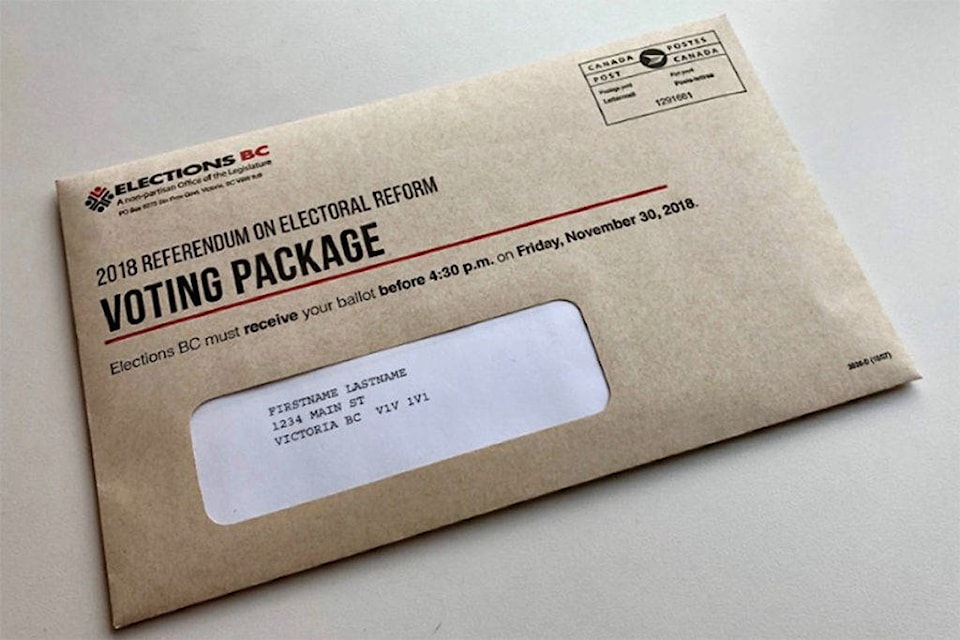The following are descriptions of the various voting systems on the ballot for the 2018 referendum in B.C.
Video
First Past the Post (FPTP) is British Columbia’s current voting system. In FPTP the province is divided into electoral districts and each district is represented by one Member of the Legislative Assembly (MLA). Voters mark their ballot for one candidate. The candidate with the most votes in the district wins and represents the district in the legislature.
Video
The number of seats a party gets in the legislature equals the number of districts its candidates win. This system tends to elect candidates from large parties and result in single-party majority governments.
FPTP is used in a number of countries at the national or sub-national level, including Canada, the United States, and the United Kingdom.
Mixed Member Proportional (MMP): two types of MLAs. District MLAs represent electoral districts and are elected using First Past the Post. Regional MLAs represent groups of electoral districts called regions. They are elected from a party list so that each party’s share of seats in the legislature roughly matches its share of the province-wide popular vote.
Video
Regional seats are allocated to parties within defined regions, not the province as a whole. District seats and regional seats – added together – roughly match the party’s share of the vote. A party must get at least five percent of the vote to get any regional seats.
In some forms of MMP, voters have two separate votes: one for a district candidate and one for a party. In other forms, voters cast one vote for a candidate that also counts for the candidate’s party. If MMP is adopted, a legislative committee will decide after the referendum if voters have one vote or two. MMP is used in a number of countries at the national or sub-national level, including Germany, New Zealand and Scotland.
Dual Member Proportional (DMP): electoral districts are combined with a neighbouring district and represented by two Members of the Legislative Assembly (MLAs). The largest rural districts continue to have one MLA elected by getting the most votes. In two-MLA districts, parties can have one or two candidates on the ballot. Parties decide which of their candidates is listed first on the ballot and which is listed second. Voters vote for a candidate or pair of candidates by marking the ballot once.
Video
The first seat in a district is won by the candidate with the most votes. For parties that run two candidates, this seat is filled by the candidate the party listed first on the ballot.
Second seats go to parties so that each party’s share of seats in the legislature roughly matches its share of the province-wide popular vote. A party’s second seats are filled in districts where its candidates did particularly well. Parties need at least five percent of the vote to get any second seats.
DMP was recently developed in Canada and is not currently in use.
Rural-Urban Proportional (RUP): combines two different proportional voting systems: Single Transferable Vote (STV) and Mixed Member Proportional (MMP).
Video
Voters in urban and semi-urban districts use STV to elect multiple MLAs for their larger electoral district. Parties can run multiple candidates in a district and voters rank their preferred candidates on the ballot (1, 2, 3, etc.). Voters can rank as many candidates as they wish.
See the Counting section in the table below for how candidates are elected in urban and semi-urban districts.
In rural districts voters use MMP to elect district and regional MLAs (see MMP).
Provincial results are likely to be generally proportional.
RUP is not used anywhere as a single system, though MMP and STV are used in several countries at the national or sub-national level. MMP is used in Germany, New Zealand, and Scotland. STV is used in Ireland, Australia and Malta.
